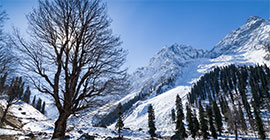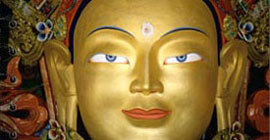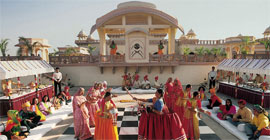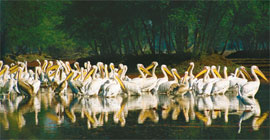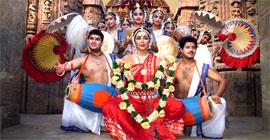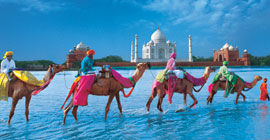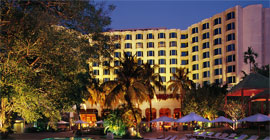jaisalmer
Home | Jaisalmer
The Jaisalmer Fort
Jaisalmer Fort is the most alive of any museum, fort or palace that you are likely to visit in India. It was built in 1156 by the Rajput ruler Jaisala. About a quarter of the old city's population resides within the fort walls. The fort is entered through a forbidding series of massive gates leading to a large courtyard.
Tazia Tower
The delicate pagoda like Tazia Tower rises from Badal Mahal (Cloud Palace). Rising in its five tiered splendour, with each storey graced by a delicately carved balcony, the tower is of historical significance.
Gadsisar Lake
A scenic rain water lake with numerous beautiful shrines around. The lake is an idyllic spot for outings.
Jain Temples
Within the fort walls are a group of beautifully carved Jain temples built between the 12th and 15th centuries. They are dedicated to Rikhabdev and Sambhavanth. Gyan Bhandar or Library : Some of the oldest manuscripts of India are found in this library established as a part of Jain temples.
Havelis
The impressive mansions built by the wealthy merchants of Jaisalmer are known as havelis, and several of these fine sandstone buildings are still in good condition.
Salim Singh-Ki-Haveli
This haveli was built about 300 years ago and part of it is still occupied. Salim Singh was the prime minister when Jaisalmer was the capital of a princely state, and his mansion has a beautifully arched roof with superb carved brackets in the form of peacocks. The mansion is just below the hill and it is said, once had two additional wooden storeys in an attempt to make it as high as the Maharaja's palace, but the maharaja had the upper storeys torn down.
Patwon-Ki-Haveli
It is one of the largest and most elaborate houses in Jaisalmer. It is five storeys high, extinsively carved. It is divided into six apartments, two owned by the Archaeological Survey of India, Two by families who operate craftshops here, and two private homes.
Nathmalji-Ki-Haveli
This late 19th century haveli was also a prime minister's house. This haveli was carved by two brothers, one working on the right side and the other on the left. Yellow sandstone elephants guard the building, and even the front door is a work of art.







